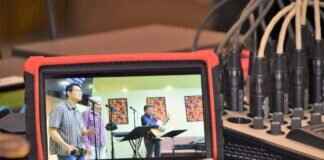In the heart of New Delhi, the lifeline of the city, the Yamuna River, is facing a crisis that experts are calling a “dead stream.” The pollution in the river poses significant environmental and health risks, prompting former National Green Tribunal (NGT) chairperson Justice Swatanter Kumar and other specialists to highlight the urgent need to address this pressing issue. Instead of turning to quick fixes like concretisation or motorboats, the focus is on tackling the root cause of pollution in the river.
Justice Kumar expressed his concerns about the lack of commitment from the Delhi government in cleaning up the Yamuna, despite the availability of resources and funding. He referenced the Maili se Nirmal Yamuna Revitalisation Project initiated in 2015, with a goal to clean the river by 2017. However, due to poor coordination and inadequate efforts, the river continues to remain heavily polluted, transforming into an open sewer that lacks environmental consciousness.
During the Citizens Dialogue for the Rejuvenation of the River Yamuna conference hosted by Green Circle of Delhi, Justice Kumar emphasized the need for action, stating, “We have turned the lifeline of Delhi into an open sewer; there is a lack of environmental consciousness. There is no data on the Yamuna River regarding what it carries, whether it is sewage, industrial waste, or medical waste. It stinks. But it can be fixed.” Despite the Centre allocating around Rs 2,000 crores to the Delhi government for river cleaning, the funds have not been fully utilized, raising concerns about the lack of progress in cleaning the river.
In agreement with Justice Kumar, former Delhi University vice chancellor Deepak Pental advocated for natural and ecological solutions to address the pollution in the Yamuna. He proposed covering the floodplain with native plants instead of resorting to artificial structures and motorboats. Pental voiced his worries about the river’s slow deterioration and highlighted the urgent need for sustainable solutions to preserve the river’s ecosystem.
Experts Call for Natural Solutions
Professor AK Gosain from IIT Delhi echoed similar sentiments, emphasizing the issue of untreated sewage from unauthorized colonies contributing to the pollution in the Yamuna. He stressed the importance of implementing local solutions and lamented the lack of progress in implementing the 2015 NGT order. Gosain called for a reevaluation of the strategies to clean the river, pointing out the need for improved technology and transparency in the process.
Adding to the discussion, Professor CR Babu, head of DU’s Centre for Environmental Management of Degraded Ecosystems (CEMDE), advocated for natural solutions like constructed wetlands on the floodplains to enhance groundwater recharge and regulate the river’s flow during floods. He emphasized the importance of utilizing native tree species to rejuvenate the river’s ecosystem, highlighting the limitations of Sewage Treatment Plants (STPs) in providing comprehensive solutions.
The conference, moderated by Suhas Borker, founder member of Green Circle, emphasized the importance of maintaining the ecological integrity of the Yamuna riverfront. Borker reiterated the need to avoid concretisation in future plans for the river, emphasizing the significance of long-term sustainable solutions for the rejuvenation of the Yamuna.
In conclusion, the experts’ call for action to address the pollution in the Yamuna River serves as a stark reminder of the urgent need for concerted efforts to clean and preserve this vital waterway. With natural and sustainable solutions at the forefront, the hope is to revitalize the Yamuna and restore its ecosystem for the benefit of future generations. The time to act is now to ensure a cleaner and healthier environment for all.














